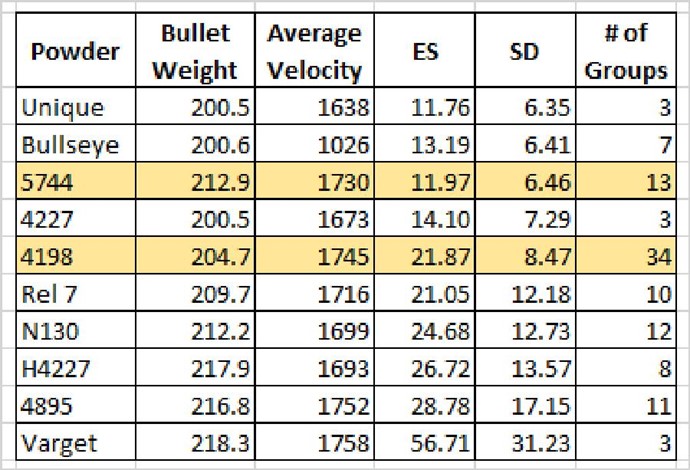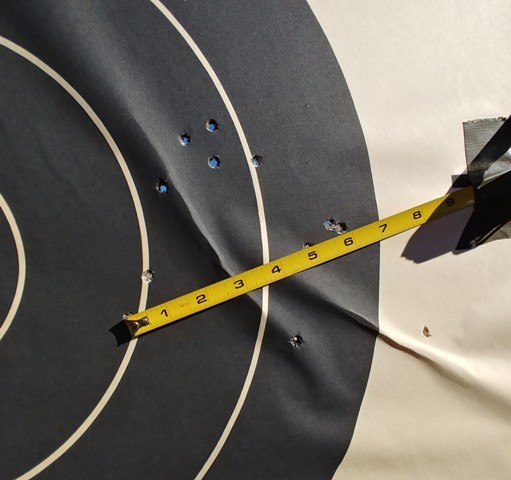Larry Gibson
posted this
20 March 2022
MP1886
I agree for the most part. Chasing the ES/SD god can be very disappointing. I think it is because the idea/myth is put forth the lowest ES/SD is necessary for good groups. That is indeed not necessarily true. First what is needed, yet is most often not had, is a sufficient sample to give a 95+/- % surety of what the true ES and SD are. [Note; the only way to know the real ES/SD of a lot of ammunition is to test/shoot the entire lot. That is not practical by any means.] Thus, is why I mention to Wm Cook that 3 or even 5 shot tests are not valid.
Second is the bullet must match the barrel twist an velocity. If it does not then you can have an excellent ES/SD yet have very poor accuracy. As an example shooting Federal .308W Match with a 175 gr MK out of a 14" twist barrel will get you very good ES/SD yet poor accuracy. That is simply because the twist is too slow for the MK bullet.
Third, the "lowest" ES/SD is not always a reasonable expectation. A reasonable expectation of ES/SD is usually higher than many assume. With a sample size of 10 shots I have chronographed and pressure tested enough match 30-06, 308W/7.62 and 223/5,56 factory/arsenal loads to realize an ES of 50 fps with an SD of 15 to 25 fps is an excellent load and, given quality match bullets and an accurate rifle, are indeed "match" loads. Many excellent 3 and 5 shot groups are fired with what is assumed to be a poor ES/SD when actually the ES?SD is well within a reasonable good ES/SD. How many times have you or someone you know gone to the range and worked up a load with 3 or 5 shot test increments. They find the one that gives them a clover leaf group along with what they think is a great ES/SD of double/single digits and yell "Ureka!". They go home and load up a whole box of 50 of that load then next trip to the range the group size is twice as big if not more and the ES/SD is three times as large..... They/you are befuddled and don't understand why. The why is simply the first sample size of 3 or 5 rounds was not large enough to give the real picture of the probable ES/SD or the group size.
Lastly, if the cast bullet is over it's RPM threshold it can have super excellent internal ballistics (ES/SD) yet be miserably inaccurate.
I also have chronographed and pressure tested thousands of cast bullet loads. I have seen some very low ES/SDs and with quality bullets and an accurate rifle they all shot well at 100 yards with most also at 200+ yards. Conversely, I have also seen, with quality bullets and an accurate rifle, many loads with not so good ES/SDs that seemed to be accurate at 100 yards but when tested at 200 or 300 yards the bottom falls out. To be sure I have seen some pretty lousy loads seemingly perform extremely well at 50 yards and even 100 yards they can be "okay". However, given quality bullets jacketed or cast and an accurate rifle those loads giving the best ES/SDs from a reasonable test sample will prove to be the most accurate in the long run and, particularly, at long ranges.
When I test rifle loads, I consider the ES/SD ratio. For a good load I consider the lowest reasonable ES/SD giving the best groups. The SD to ES ratio should be, given a minimal 10 shot test, between 30 and 45% of the ES. If the ratio of SD to ES is smaller or larger than that 30 - 45% If the ration is not within that i look for anomalies in the group and in the individual shot data.
If one is only shooting 50 yards or even just 100 yards chasing the lowest ES/SD god can indeed be misleading.
LMG
Concealment is not cover.........










.jpg?width=690&upscale=false)









